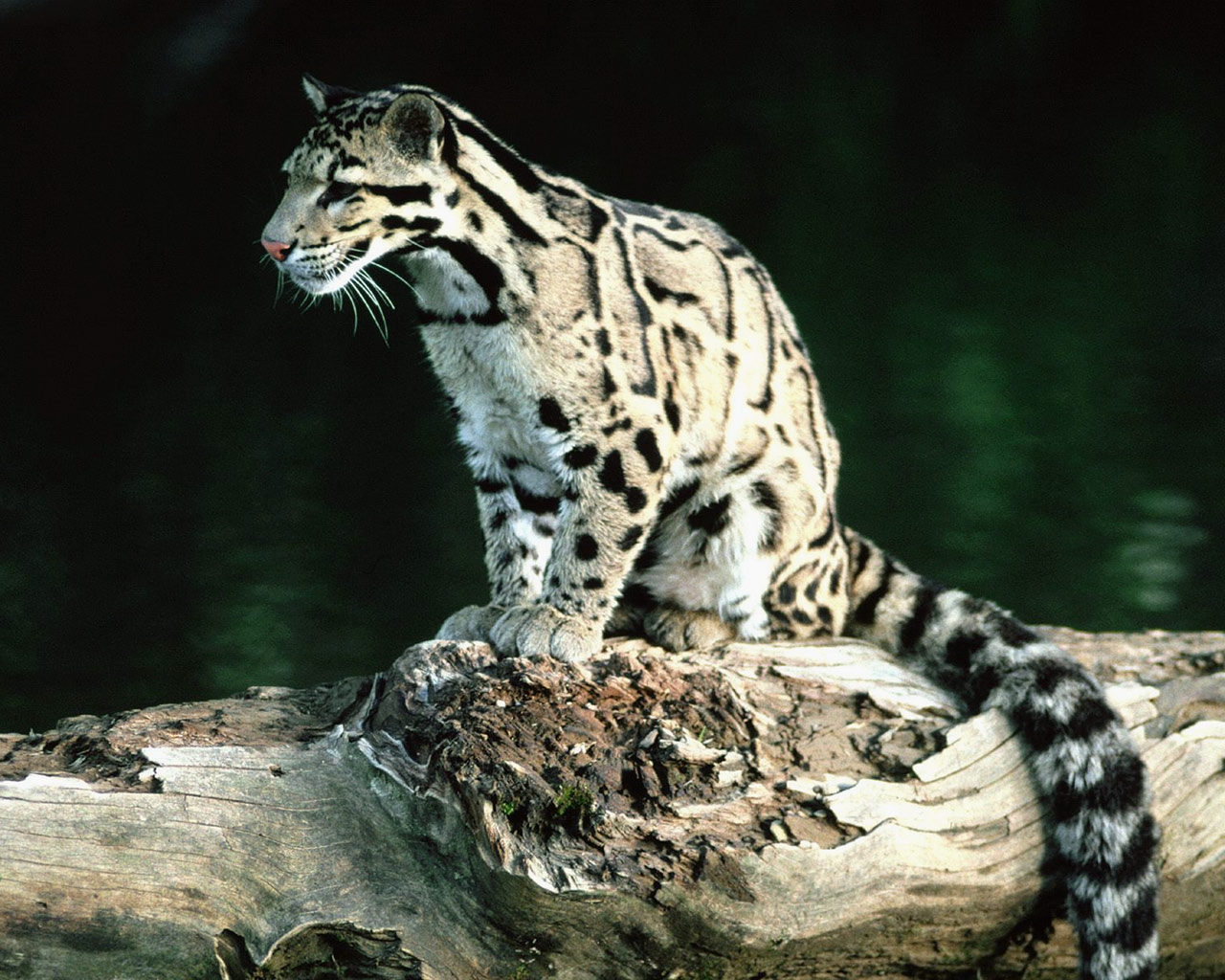Clouded Leopard: The Enigmatic Big Cat Of Southeast Asia
The clouded leopard, a magnificent and elusive creature, roams the dense forests of Southeast Asia, captivating the hearts of wildlife enthusiasts and researchers alike. This unique big cat, known scientifically as Neofelis nebulosa, is renowned for its stunning coat patterns and arboreal lifestyle. In this article, we will delve into the intriguing world of the clouded leopard, exploring its habitat, behavior, conservation status, and the vital role it plays in its ecosystem.
With a striking resemblance to its larger cousin, the tiger, the clouded leopard boasts a distinctively cloud-like pattern on its fur, which serves as excellent camouflage in the dappled sunlight of its forest home. As we journey through the life of this remarkable animal, we will uncover the challenges it faces in the wild and the ongoing conservation efforts aimed at protecting its future.
Join us as we explore the captivating life of the clouded leopard, a creature that embodies the beauty and fragility of our natural world. From its biology and behavior to its conservation status, we will provide comprehensive insights that highlight the importance of preserving this incredible species for generations to come.
Table of Contents
- Biology of the Clouded Leopard
- Natural Habitat of the Clouded Leopard
- Behavior and Social Structure
- Diet and Hunting Techniques
- Conservation Status
- Threats to Clouded Leopard Populations
- Conservation Efforts
- Conclusion
Biology of the Clouded Leopard
The clouded leopard is a medium-sized wild cat, averaging 60 to 110 cm in length, with a tail that can be nearly as long as its body, enhancing its balance in the trees. Its distinctive fur is marked with dark, cloud-like spots, which help it blend into the forest environment. The clouded leopard has a unique bone structure in its legs and footpads, allowing it to descend trees headfirst and leap great distances between branches.
| Attribute | Details |
|---|---|
| Scientific Name | Neofelis nebulosa |
| Habitat | Tropical and subtropical forests |
| Weight | 11 to 23 kg |
| Length | 60 to 110 cm |
| Tail Length | 60 to 90 cm |
| Diet | Carnivorous, primarily small to medium-sized mammals |
| Reproduction | Breeds year-round, with a gestation period of about 90-95 days |
Natural Habitat of the Clouded Leopard
Clouded leopards are primarily found in the tropical and subtropical forests of Southeast Asia, including countries such as Malaysia, Thailand, Vietnam, and Indonesia. These forests provide the necessary cover and climbing opportunities that the species requires for hunting and evading larger predators.
Key characteristics of their habitat include:
- Dense foliage for camouflage
- High canopy trees for climbing and resting
- Rich biodiversity that supports their prey
Behavior and Social Structure
Clouded leopards are solitary animals, coming together only during mating season. They are primarily nocturnal, hunting under the cover of darkness. Their climbing abilities are exceptional, allowing them to hunt and escape threats effectively.
Communication
These big cats communicate through a series of vocalizations, including growls, hisses, and chuffs. They also use scent marking to establish territory.
Territoriality
Clouded leopards are territorial, with males having larger home ranges than females. They utilize scent marking and vocalizations to ward off intruders and maintain their territory.
Diet and Hunting Techniques
The diet of the clouded leopard primarily consists of:
- Deer
- Wild boar
- Primates
- Birds and smaller mammals
They are skilled ambush predators, utilizing their excellent climbing skills to stalk prey from above before launching a surprise attack. Their sharp retractable claws and powerful jaws enable them to take down animals much larger than themselves.
Conservation Status
The clouded leopard is classified as Vulnerable on the IUCN Red List, with populations declining due to habitat loss and poaching. Conservation efforts are crucial to ensure the survival of this species and maintain the ecological balance within its habitat.
Threats to Clouded Leopard Populations
The main threats to clouded leopards include:
- Deforestation for agriculture and logging
- Illegal poaching for fur and body parts
- Human-wildlife conflict due to habitat encroachment
These factors have led to significant population declines, making conservation efforts more critical than ever.
Conservation Efforts
Various organizations and governments are working to protect clouded leopards through:
- Establishing protected areas and wildlife reserves
- Raising awareness about the species and its ecological importance
- Implementing anti-poaching initiatives and enforcing wildlife protection laws
Community involvement and education are essential components in the fight to save the clouded leopard from extinction.
Conclusion
In conclusion, the clouded leopard is a remarkable and vital species within its ecosystem. Its unique adaptations and behaviors make it a fascinating subject of study, while its vulnerable status highlights the urgent need for conservation efforts. By working together, we can help preserve this enchanting big cat and ensure its survival for future generations. We encourage you to share your thoughts in the comments below and explore other articles on wildlife conservation.
Thank you for taking the time to learn about the clouded leopard. We hope you found this article informative and inspiring. Please visit our site again for more engaging content on wildlife and conservation efforts.
You Might Also Like
Scottie Scheffler Welcomes New Baby: A Journey Into FatherhoodUnveiling The Life And Career Of Dan Greiner: A Journey Of Success And Innovation
Margot Robbie: The Rise Of A Hollywood Star
Tracy Edwards: The Trailblazing Sailor Who Changed The Face Of Yachting
Exploring The Iconic NSYNC Members: A Deep Dive Into Their Journey
Article Recommendations
- Loc>
- Dont Tell Mom The Babysitters Dead Cast
- The Heat Of The Night Cast
- When To Wrap A Brisket
- Does Luca Leave Swat
- Tron Lightcycle Run
- I Saw The Tv Glow Mr Melancholy
- P Diddy And The Clintons
- Chris Cuomo Married
- How Old Is Jey Uso

Clouded leopard Endangered species, Southeast Asia, Nocturnal

Clouded Leopard Wildlife PhotosInfo The Wildlife